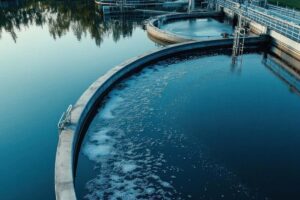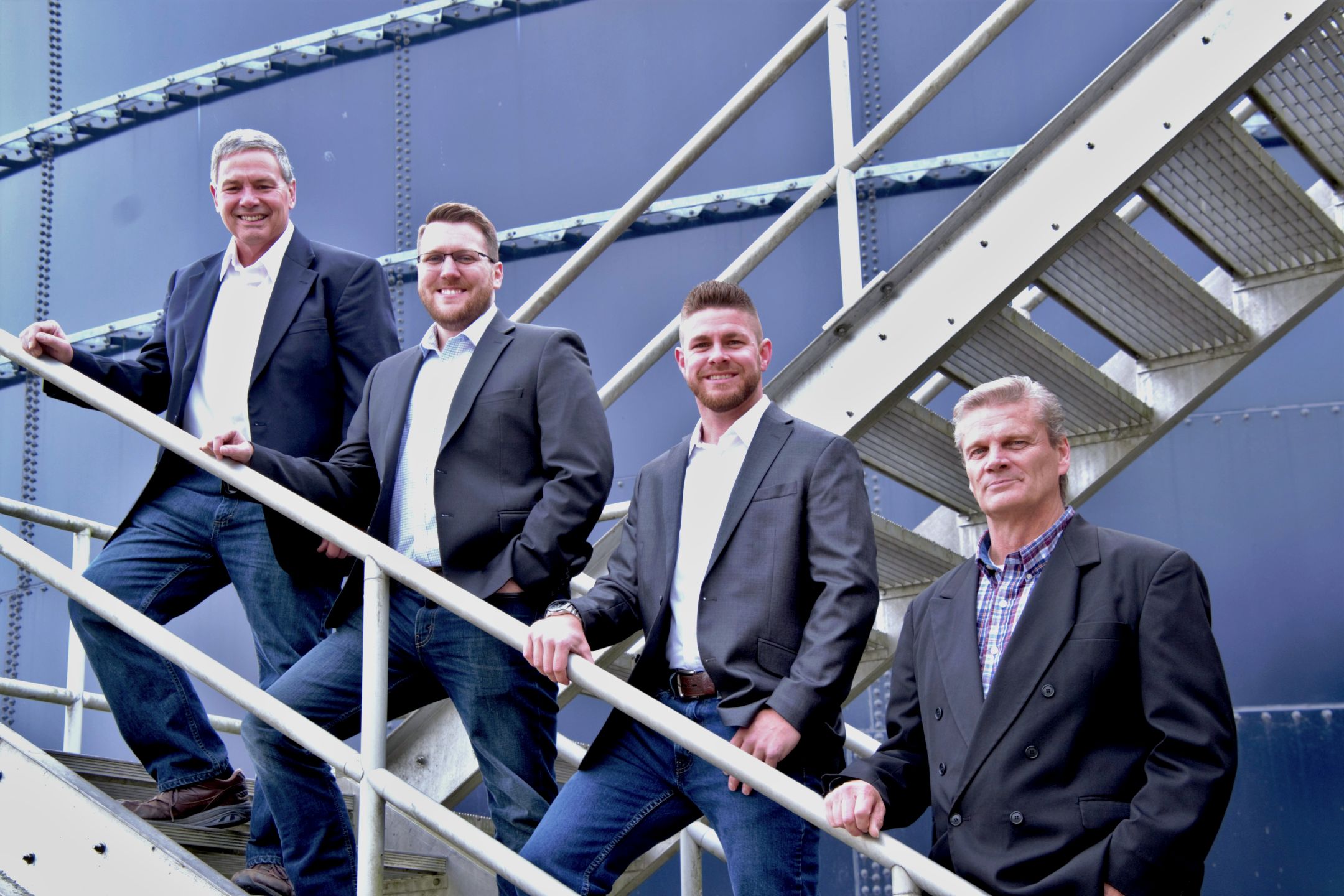 Designing a wastewater treatment plant is both a science and an art. While it may seem like a straightforward task, it involves a deep understanding of engineering, chemistry, biology, local environmental law, and construction practices. These plants serve an essential purpose in protecting public health and safeguarding our environment by treating wastewater from homes, businesses, and industries before it’s released back into the environment.
Designing a wastewater treatment plant is both a science and an art. While it may seem like a straightforward task, it involves a deep understanding of engineering, chemistry, biology, local environmental law, and construction practices. These plants serve an essential purpose in protecting public health and safeguarding our environment by treating wastewater from homes, businesses, and industries before it’s released back into the environment.
Whether you’re a seasoned professional in the field or just starting out, designing a wastewater treatment plant requires navigating various complexities. From understanding the type of wastewater, to selecting the right equipment for ensuring regulatory compliance, the process involves multiple factors. In this article, we’ll venture through what goes into designing a plant that is efficient, sustainable, and equipped for the future.
Key Factors in Designing a Wastewater Treatment Plant
Designing a wastewater treatment plant starts with a clear understanding of several critical factors. These elements will shape the overall design, operational efficiency, and long-term viability of the facility.
- Regulatory Compliance: Navigating Legal Waters
One of the most crucial steps in the design process is ensuring the plant meets local, national, and even international regulations. These laws, often set by environmental protection agencies, aim to limit the environmental impact of wastewater discharge to the environment. Engineers must consider discharge limits on contaminants, permissible treatment methods, constructability, and costs.
Regulations also dictate the quality of treated water, often requiring a multi-step process to remove pollutants such as organic matter, nitrogen, phosphorus, and harmful microorganisms. Failure to comply can result in fines, lawsuits, shutdowns, and environmental damage.
Not all wastewater is created equal. Municipal wastewater, which comes from households, has a different composition compared to industrial wastewater, which may contain harmful chemicals, heavy metals, or high levels of organic waste. Understanding the characteristics of the influent wastewater is a crucial first step in selecting the appropriate treatment processes.
For example, a treatment plant designed to handle municipal wastewater focuses on removing organic matter, solids and pathogens, while an industrial plant might require advanced chemical treatments to neutralize toxic compounds.
- Flow Rate and Capacity Planning
Accurate prediction of the flow rate—the volume of wastewater entering the plant over time—is key to preventing overloading and ensuring smooth operation. Plant capacity must be planned with both current demands, and future growth in mind. Undersizing a plant can cause frequent malfunctions or even non-compliance, while over-sizing can result in unnecessary costs and operational issues.
Designers often analyze historical data, population growth trends, and industrial activity in the area to estimate flow rates and the plant’s long-term capacity needs. An adaptable design and phased construction can also accommodate seasonal fluctuations and emergency situations, such as heavy rainfall or equipment failures.
The Treatment Process Overview
Wastewater treatment is typically divided into three main stages: primary, secondary, and tertiary treatment. Each stage plays a unique role in purifying the water, removing different types of contaminants, and preparing for safe discharge or reuse.
- Primary Treatment: The First Line of Defense
The primary treatment process focuses on removing large solid materials from the wastewater. This is often done through screening, which removes debris, plastics, rags, and other bulky objects.
Once screened, the wastewater passes through a settling process, where heavier particles like sand, grit, and organic matter settle to the bottom. This process removes about 50-70% of the total suspended solids from the wastewater, and 15 – 40% of organic material. While primary treatment doesn’t remove dissolved substances or pathogens, it significantly reduces the load on subsequent treatment stages, making them more effective and efficient.
- Secondary Treatment: Biological Breakdown
 After the larger particles are removed, the next step is to tackle the dissolved organic matter. Secondary treatment is often where biological processes come into play. Microorganisms, such as bacteria, break down organic pollutants in the wastewater through processes like:
After the larger particles are removed, the next step is to tackle the dissolved organic matter. Secondary treatment is often where biological processes come into play. Microorganisms, such as bacteria, break down organic pollutants in the wastewater through processes like:
Activated Sludge: In this process, air or oxygen is pumped into aeration tanks to encourage the growth of microorganisms. These microbes consume the organic matter, converting it into carbon dioxide, water, and biomass, which can later be removed.
Attached Growth: Another method involves wastewater trickling over a bed of rock or plastic media, as well as mixed within a tank filled with plastic media. The media becomes covered with biofilm, and as the wastewater comes into contact with the biofilm, the microorganisms digest the organic pollutants.
Both methods are highly effective in reducing the biological oxygen demand (BOD), and removing much of the organic material present in the wastewater.
- Tertiary Treatment: Polishing the Effluent
Tertiary treatment is the final stage of the process, sometimes called the “polishing” stage. This step targets any remaining contaminants that weren’t removed in the previous stages. Depending on the discharge requirements, tertiary treatment may include:
Advanced Filtration: Removing fine particles using media filters or membrane filtration systems.
Nutrient Removal: Processes like denitrification and phosphorus removal are used to limit excess nutrients that can cause environmental issues like eutrophication in water bodies.
Disinfection: Chlorination, UV light, or ozonation is used to kill harmful pathogens, ensuring the treated water is safe for discharge or reuse.
This final stage is crucial for meeting stricter regulatory requirements and ensuring the wastewater is clean enough for either environmental discharge or potential reuse in irrigation or industrial processes.
Technology and Equipment Selection
Choosing the right technology and equipment is a critical aspect of designing an efficient wastewater treatment plant. The selection process depends on factors such as the plant’s size, the type of wastewater it will treat, and the specific treatment goals.
- Pumps and Blowers: Plant Workhorses
 Pumps are essential for moving wastewater through various stages of treatment, while blowers play a crucial role in aeration processes.
Pumps are essential for moving wastewater through various stages of treatment, while blowers play a crucial role in aeration processes.
Centrifugal Pumps are often used due to their reliability and efficiency in handling large volumes of water.
Positive displacement or regenerative blowers are common in biological treatment, providing the necessary oxygen for microorganisms to thrive.
The selection of pumps and blowers should consider energy efficiency and durability, since they run more often than other equipment.
- Screens and Grit Removal Systems
Screens are usually the first line of defense, filtering out large debris that can damage equipment, or clog the system. There are different types of screens, including coarse and fine, depending on the level of filtration needed.
Grit removal systems, such as grit chambers, help eliminate sand, gravel, and other heavy particles. These systems prevent damage to downstream equipment, and improve overall plant efficiency.
- Clarifiers and Sedimentation Tanks
Clarifiers are crucial in both primary and secondary treatment stages. They allow suspended solids to settle, which can then be removed as sludge.
Circular Clarifiers are commonly used for their ability to handle high flow rates.
Lamella Clarifiers offer a more compact solution, using inclined plates to increase sedimentation efficiency in smaller spaces.
- Advanced Filtration and Membrane Systems
In tertiary treatment, advanced filtration is often required to remove finer particles. Technologies like media filters or membrane filtration systems (such as microfiltration or reverse osmosis) provide high levels of contaminant removal. Membrane systems, while more expensive, are particularly useful in producing highly purified water, especially in areas where water reuse is a goal.
- Energy Recovery and Sludge Handling
Modern treatment plants often incorporate technologies for energy recovery, turning waste into a resource. Anaerobic digesters can convert sludge into biogas, which can then be used to generate electricity or heat.
Additionally, sludge dewatering equipment such as belt presses or centrifuges are used to reduce the water content in sludge, making it easier to transport and dispose of, or use in land applications.
Energy Efficiency and Sustainability: Designing for the Future
In today’s world, designing a wastewater treatment plant isn’t just about meeting regulatory standards—it’s also about minimizing environmental impact and optimizing energy use. Sustainable design practices can significantly reduce a plant’s carbon footprint, lower operational costs, and enhance long-term performance.
- Energy-Efficient Equipment and Processes
 Energy consumption is one of the largest operational costs for wastewater treatment plants. Implementing energy-efficient technology is crucial for both cost-saving and sustainability.
Energy consumption is one of the largest operational costs for wastewater treatment plants. Implementing energy-efficient technology is crucial for both cost-saving and sustainability.
Variable Frequency Drives (VFDs): These devices adjust motor speed to match the required flow, reducing energy consumption in pumps and blowers.
High-Efficiency Aeration Systems: Aeration is one of the most energy-intensive processes in a treatment plant. By selecting energy-efficient blowers or diffused aeration systems, plants can significantly cut energy use.
Energy-Efficient Lighting: Using LED lighting and motion sensors throughout the facility can reduce energy waste in non-treatment areas.
- Renewable Energy Integration
Many modern wastewater treatment plants are now designed to generate renewable energy on-site, helping reduce reliance on external energy sources. This can be achieved through:
Biogas from Anaerobic Digestion: Sludge from wastewater treatment can be broken down by anaerobic bacteria to produce biogas, which is rich in methane. This gas can then be used to generate electricity or heat, offsetting the plant’s energy demands.
Solar Panels and Wind Turbines: Some plants integrate solar panels or small-scale wind turbines to harness renewable energy, further decreasing the reliance on the grid.
- Water Reuse and Resource Recovery
Wastewater treatment plants are no longer just about treating water for discharge—they can be designed to recover valuable resources. Water reuse is a key aspect of sustainable design, especially in water-scarce regions.
Treated Water for Irrigation or Industrial Use: Tertiary-treated wastewater can be reused for irrigation, industrial processes, or even groundwater recharge, reducing the demand on freshwater supplies.
Nutrient Recovery: Some plants recover phosphorus and nitrogen from wastewater and sludge, which can be processed into fertilizers for agricultural use.
- Sustainable Construction and Materials
When designing a new plant or upgrading an existing one, sustainable construction practices can further reduce environmental impact. This includes using low-impact building materials, incorporating green roofs, and planning for stormwater management systems to reduce runoff.
- Carbon Footprint Reduction and Net-Zero Goals
Many wastewater treatment facilities are now striving for net-zero carbon emissions, using a combination of renewable energy, energy efficiency, and carbon offset strategies. Designing a plant with these goals in mind ensures that it can meet both current and future sustainability standards.
Automation and Control Systems: The Brains Behind the Operation
In modern wastewater treatment plants, automation and control systems are critical for ensuring smooth, efficient, and reliable operations. These systems allow plant operators to monitor and manage complex processes in real-time, reducing the risk of human error, and optimizing performance.
- Supervisory Control and Data Acquisition (SCADA) Systems
 A SCADA system is at the heart of plant automation, providing real-time data collection, monitoring, and control. SCADA systems allow operators to:
A SCADA system is at the heart of plant automation, providing real-time data collection, monitoring, and control. SCADA systems allow operators to:
Monitor Equipment: Track the performance of pumps, blowers, and other machinery.
Control Processes Remotely: Adjust operational parameters without needing to be physically on-site.
Receive Alerts: SCADA can send automatic alerts for issues such as equipment malfunctions, high levels in tanks, or unusual flow rates, enabling quick responses to potential problems.
Analyze Data: The system stores historical data, which can be analyzed to improve process efficiency and anticipate future maintenance needs.
- Programmable Logic Controllers (PLCs)
PLCs are used to control specific processes within the plant, such as regulating the flow of water through different treatment stages, or managing aeration levels. These controllers can be programmed to respond automatically to changing conditions, optimizing processes in real-time.
For example, in an activated sludge system, PLCs can adjust blower speeds based on the oxygen demand of the biological treatment process, ensuring the most energy-efficient operation.
- Sensors and Real-Time Monitoring
The effectiveness of automation relies heavily on real-time data, which comes from sensors installed throughout the plant. These sensors monitor key parameters such as:
Flow Rates: To track how much wastewater is entering and leaving different treatment stages.
pH Levels: Ensuring proper chemical balance during the treatment process.
Dissolved Oxygen (DO): In biological treatment processes, DO levels are critical for supporting microbial activity.
Nutrient Levels: Monitoring nitrogen, phosphorus, and other contaminants to ensure proper removal.
By gathering this data, the plant can make instantaneous adjustments to keep operations within optimal ranges.
- Predictive Maintenance
Automated systems also enable predictive maintenance, where data is used to anticipate when equipment is likely to fail or require servicing. This approach reduces downtime, prevents costly breakdowns, and extends the lifespan of machinery.
For example, seal leak sensors on pumps can alert operators to wear and tear before a complete failure occurs, allowing for timely maintenance.
- Remote Access and Cloud-Based Systems
Many plants now incorporate remote access capabilities, allowing operators to monitor and control systems from anywhere. This ensures that critical adjustments can be made even when staff are off-site, enhancing the flexibility and responsiveness of plant operations.
Challenges in Design: Overcoming Obstacles
Designing a wastewater treatment plant involves addressing a range of challenges that can impact both the project’s timeline and its long-term operation. Some of the most common hurdles include:
- Budget Constraints
Cost is always a major factor in the design process. Striking a balance between quality, efficiency, and cost-effectiveness can be challenging, especially when budgets are tight. Choosing cost-effective materials, technologies, and processes that don’t compromise the plant’s performance or longevity, requires careful planning and foresight. Explore our hassle-free Budget Equipment Cost Calculator to estimate the cost for your wastewater treatment plant. It’s the perfect tool for understanding wastewater treatment plant costs quickly and easily.
- Land Use and Site Limitations
 Finding an appropriate site for the plant can present spatial and regulatory challenges. Designers must consider proximity to water sources, nearby communities, and local environmental conditions. Sometimes, plants must be built in confined spaces, requiring creative solutions such as compact treatment technologies, and/or underground infrastructure.
Finding an appropriate site for the plant can present spatial and regulatory challenges. Designers must consider proximity to water sources, nearby communities, and local environmental conditions. Sometimes, plants must be built in confined spaces, requiring creative solutions such as compact treatment technologies, and/or underground infrastructure.
- Environmental Impact and Community Concerns
Wastewater plants can sometimes face opposition from local communities concerned about odors, noise, or potential environmental impact. Addressing these concerns requires implementing odor control systems, noise reduction measures, and designing the plant to meet strict environmental standards.
- Operational Complexity and Maintenance
Wastewater plants are complex facilities with multiple interacting systems. Ensuring that the plant operates smoothly and can be easily maintained requires thorough planning. Designers need to ensure that equipment is accessible for routine maintenance, and that operational complexity is kept to a manageable level for operators.
- Adapting to Changing Regulations
Environmental regulations are continuously evolving, becoming stricter over time. Designers must consider not only current regulatory requirements, but also potential future changes. This often involves designing plants with flexibility in mind, so they can be upgraded or modified to meet new standards without major overhauls.
Designing for the Future
Designing a wastewater treatment plant is a multifaceted process that requires careful consideration of regulations, environmental impact, technology, and operational efficiency. Whether you’re dealing with a small municipal facility, or a large industrial plant, every decision made during the design phase will impact the plant’s performance and sustainability for years to come.
By prioritizing energy efficiency, sustainable practices, and smart automation systems, designers can create plants that not only meet today’s requirements, but are also prepared to adapt to the needs of the future. Ultimately, these designs play a crucial role in protecting public health, conserving resources, and safeguarding the environment.








